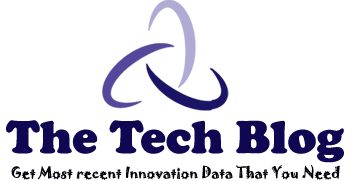How Do IoT Platforms Work?
IoT platforms have received a lot of attention lately, with most major IoT players releasing one form or another. IoT platforms are a market category with several mature products that help you simplify your IoT journey.
Any device can use IoT platforms, but the team behind the platform will work with the device connected to it. Standard features offered by IoT platforms include APIs to connect to IoT applications and the ability to connect to other devices such as smart thermostats, smart meters, and smart lights. Depending on the complexity of your IoT system, you may need more than one IoT platform to maintain smooth operation. Use the table above to find out more about the different types of IoT platforms available to you and choose the one available in the market for your business.
To understand what an IoT platform is, you first need to understand the complete IoT system. This enables you to examine what it is and gain a deeper understanding of how it can improve your business. IoT platforms act as firewalls for the entire IoT ecosystem, providing an additional layer of security to all connected devices. The technologies of the Healthcare IoT platform must include enterprise-grade security. However, safety depends on the IoT platform provider as the architect of an IoT solution.
Essentially, an IoT platform is the putty that holds together the sensors, devices, networks, and software that make up the IoT ecosystem. Simply put, it is a platform for all devices connected to the IoT environment. Despite the broad definition, one of the aspects of IoT systems mentioned above was the importance of an IoT platform.
It is a cloud-based or premises-based software component that orchestrates the integration of sensors, networks, and other components of an IoT system and enables human interaction. For enterprise applications, it is also known as an end-to-end IoT platform, which gives you access to a diverse range of applications and services and the ability to orchestrate them all.
The primary purpose of an IoT platform is to reduce the complexity of deployment and implementation of IoT systems and provide actionable intelligence to IoT developers, service providers, and implementers. IoT platforms are data-driven solutions, powerful tools that connect all elements of the IoT system while providing users with the tools and tools to interact with it.
There are numerous definitions of the IoT platform that point to different but similar capabilities and essentials. IoT platforms share common types of skills. Even if one of them performs better in one area than another in another, they all share a common variety of skills to help your business or project.
Here we will break down the components of the IoT platform and explain some standard functions. If necessary, IoT platforms illustrate examples of different types of skills and their use cases.
The first component of an IoT platform is IoT-enabled devices that need to be connected and monitored. Stuff IoT is equipped with various sensors that can interact with physical objects and collect information from the Internet of Things (IoT Platform).
I platforms are part of a vast IoT ecosystem that supports and connects all system components. IoT solutions and the tools, technologies, SDKs, and protocols that help a wide range of them and their infrastructure.
In addition to the IoT platforms mentioned above, there are several other IoT solutions on the market, such as Cloud – Connected Cisco IoT. IoT solutions, be it IBM IoT, connected to the Cloud, or Cisco’s own Connected IoT platform.
As IoT continues to revolutionize the way we connect and interact with our devices, innovative solutions build on a range of network options. LoRaWAN enables connections between networks, applications, servers, and the Cloud.
AT & T helps developers build and deliver IoT solutions, and Alibaba’s Cloud IoT platform provides device and SDK support for mobile devices.
It is not impossible to develop your own IoT platform, especially given the number of open-source tools and open-source tools available today. IoT platforms offer a head start in building IoT systems by providing integrated tools and capabilities that make it quick to design, build, test, and deploy IoT solutions. It is a platform that offers the ability to control, interact and secure all elements of the IoT while providing architectural and technological support to make the IoT a reality.


